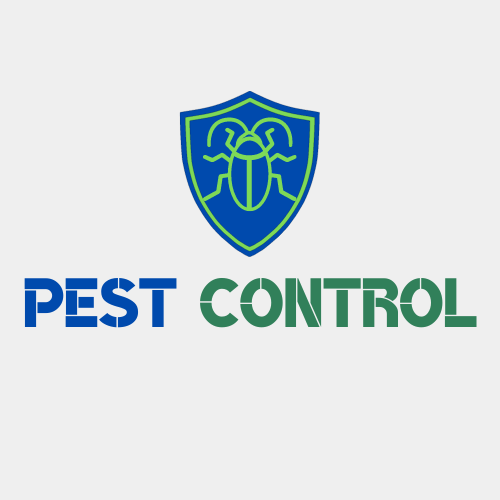Effective Pest Control Strategies for Industrial Facilities: A Guide for Villa Luz, Juárez
In the competitive environment of industrial facilities, particularly in regions like Villa Luz, Juárez, maintaining a pest-free environment is crucial for the health and safety of employees, compliance with health regulations, and overall operational success. Pest control is not merely about eliminating existing problems; it involves implementing proactive measures that ensure the long-term integrity of the facility. In this article, we will explore several effective pest control strategies, focusing on pest-resistant building materials, organic solutions, and the installation of protective barriers such as insect-proof doors and screens.
The Importance of Pest Control in Industrial Settings
Industrial facilities, particularly those involved in food handling or processing, are prime targets for various pests. Rodents, insects, and other pests can infest warehouses, kitchens, and production lines, leading to contamination, product spoilage, and potential health hazards. Effective pest control is a prerequisite not only for maintaining cleanliness but also for fulfilling safety regulations that ensure the protection of both workers and consumers.
Installing Insect-Proof Doors in Food Handling Areas
One of the first lines of defense against pests in food handling areas is the installation of insect-proof doors. These specialized doors are designed to act as barriers, preventing insects and rodents from entering the premises while allowing for easy access for employees. The effectiveness of insect-proof doors lies in their design; often, they are equipped with features such as:
– Tight seals to eliminate gaps where pests may enter
– Self-closing mechanisms that ensure the door remains closed after use
– Durable materials that withstand wear and tear from daily operations
Implementing insect-proof doors in strategic locations throughout the facility can significantly reduce pest entry points and create a secure environment for food production and processing.
Installing Insect-Proof Screens on Air Intakes and Ducts
In addition to doors, installing insect-proof screens on air intakes and ducts plays a critical role in maintaining air quality while keeping pests out. These screens are designed to filter out pests while allowing for proper ventilation within the facility. They serve multiple purposes:
1. Preventing Infestation: By covering air intakes and ducts, facilities can minimize the risk of pests entering through HVAC systems.
2. Maintaining Airflow: Properly installed screens do not impede airflow; rather, they work as a barrier without sacrificing climate control.
3. Enhanced Cleanliness: Screens help keep areas clean by limiting the entry of debris and pests, reducing overall maintenance needs.
Combining insect-proof screens with doors can provide a comprehensive approach to pest prevention, ensuring that both ingress and egress points are well safeguarded.
Encouraging Pest-Resistant Building Materials
The choice of building materials can dramatically influence a facility’s vulnerability to pests. Encouraging the use of pest-resistant building materials is an important strategy in pest control for industrial facilities. These materials can include:
– Concrete and Steel: Unlike wood, which can harbor termites, concrete and steel are less hospitable to many pests, making them ideal for structural elements.
– Non-porous Surfaces: Installing non-porous flooring and wall surfaces can deter pests from nesting and burrowing into materials, thereby minimizing infestations.
– Weatherproof Exteriors: Using high-quality weatherproof materials ensures that structural weaknesses due to environmental exposure are minimized, reducing the likelihood of pest breaches.
By prioritizing pest-resistant materials in construction and renovations, facilities can create self-sustaining environments where pests are less likely to thrive.
Offering Organic Pest Control Solutions for Certified Facilities
In today’s eco-conscious market, many industrial facilities are seeking organic pest control solutions that align with their sustainability goals. Offering organic pest control solutions is not just about compliance; it is about actively promoting a healthier environment for both employees and consumers. Certified facilities can benefit from various organic pest control approaches, including:
– Natural insect repellents derived from plant-based ingredients that are effective against common pests without harming the ecosystem.
– Biological control methods, such as introducing natural predators that help manage pest populations without the use of chemicals.
– Integrated Pest Management (IPM) programs that combine biological, physical, cultural, and chemical strategies tailored to the specific needs of the facility.
Transitioning to organic pest control not only reduces ecological impact but also enhances the facility’s image, appealing to a growing demographic of environmentally-conscious consumers.
Eco-Conscious Termite Control for Green Industrial Facilities
For green industrial facilities, minimizing termite risks is a priority because traditional termite treatments may involve chemicals that conflict with sustainability values. Eco-conscious termite control solutions are designed to manage termite populations effectively while prioritizing environmental health. These methods may include:
– Boric acid treatments that are less toxic and can be used in sensitive areas.
– Physical barriers, such as metal mesh, that prevent termites from accessing wood structures.
– Moisture control practices to reduce conditions that often lead to termite infestations, such as standing water and poor drainage.
By implementing eco-conscious termite control strategies, facilities not only protect their structures but also align their operations with sustainable practices.
Conclusion: Building a Pest-Free Future in Villa Luz, Juárez
In conclusion, effective pest control in industrial facilities, particularly in regions like Villa Luz, Juárez, involves a multi-faceted approach that includes installing insect-proof doors and screens, choosing pest-resistant building materials, and offering organic solutions. By prioritizing these strategies, facilities can create safer, cleaner, and more sustainable environments that not only comply with health regulations but also promote the wellbeing of employees and consumers alike.
As businesses in Villa Luz continue to thrive and grow, investing in pest control measures will be essential to ensuring a successful and pest-free future.
